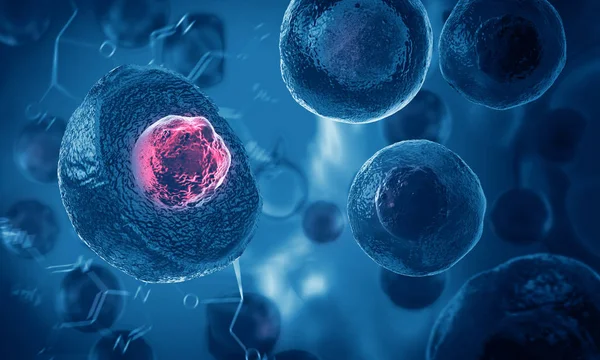How Immune cells shape our earliest breaths – Immune cells play a crucial role in shaping our earliest breaths, particularly in the development of the lung immune environment. During early developmental stages, progenitor and innate immune cells, including myeloid, innate lymphoid (ILC), and natural killer (NK) cells, predominate.
Lung development begins at embryonic day 9 (E9) in mice and proceeds through stages of branching morphogenesis, giving rise to pre-alveolar structures
- First-breath-induced Type 2 Pathways: These pathways shape the lung immune environment, with ILC2s contributing to lung quiescence in homeostasis by polarizing tissue resident alveolar macrophages (AMs) and inducing an M2 phenotype in transplanted macrophages
- Epithelial Cell Fate: Studies of human lung development have focused on epithelial and mesenchymal cell types and function, but less is known about the role of immune cells in epithelial cell fate.
Research
A groundbreaking study published in Science Immunology rewrites the script, revealing these tiny conductors not just guarding, but actively orchestratating the very construction of our first breaths.
Previous lung development research focused on the structural players – the epithelial cells lining the airways and the mesenchymal cells shaping the lung’s framework. Yet, a significant chapter remained unread, shrouded in technical and conceptual challenges. The immune cells, with their dynamic dance of differentiation and diverse repertoire, remained elusive actors in this intricate play. Tracing their metamorphosis from embryonic whispers to postnatal powerhouses posed unique difficulties. The sheer complexity of the developing lung, a labyrinth compared to simpler tissues, compounded the analytical hurdles.
Undeterred, the researchers in this landmark study wielded a cutting-edge toolbox to illuminate the immune cell orchestra. Immunohistochemistry painted vivid portraits of cell types and their spatial distribution, while confocal microscopy and 3D image analysis meticulously quantified their populations. Flow cytometry and fluorescence-activated cell sorting dissected the diverse cast of immune players, while single-cell RNA sequencing and CITE-seq unraveled the symphony of molecules conducted by these microscopic maestros. Finally, human embryonic lung organoids, miniature replicas of the developing lung, served as a stage to observe the immune cells’ direct impact on lung architecture.
The orchestra’s performance defied expectations. Unlike a static chorus, immune cell populations danced a biphasic ballet, surging in numbers at critical junctures like 8 and 20 weeks, potentially in harmony with the developing vasculature. The spotlight unexpectedly illuminated new soloists – a chorus of early lymphoid and innate lymphoid progenitors, their roles previously unknown in this prenatal play. And in a plot twist worthy of a grand opera, the study revealed mature B-cells not just backstage waiting for their bone marrow debut, but actively rehearsing within the embryonic lung itself, casting doubt on the long-held belief of their single origin.
But the most breathtaking revelation lay in the intricate duet between the immune cells and the epithelial stem cells, the architects of the lung’s delicate lining. It turns out, the immune cells weren’t just passive guardians; they were active builders, wielding a cytokine baton named interleukin-1 beta to guide the differentiation of these vital stem cells, shaping the very landscape of the developing lung.
This groundbreaking study is not just an encore, but a curtain rise on a whole new act in the drama of lung development. With the immune cells taking center stage, the implications for health and healing are as awe-inspiring as the discoveries themselves. Understanding how immune cell dysregulation may contribute to lung diseases opens doors for novel therapies tailored to these microscopic conductors. Harnessing the innate repair potential of the lung, guided by the immune orchestra’s harmonious melodies, could revolutionize the landscape of lung transplantation and treatment.
Key findings of the study on fetal immune cells and lung development:
1. Biphasic pattern of immune cell populations:
- Progenitor and innate immune cells dominate early stages (5-22 weeks), followed by T- and B-lymphocytes later.
- CD45+ cells present throughout, but with varying quantity across time and location.
2. Unexpected cell types and B-cell maturation:
- High densities of ILC (innate lymphoid) and early lymphoid progenitors (ELPs) discovered.
- B-cell maturation observed in embryonic lungs, challenging the sole bone marrow origin belief.
3. Immune cells influence lung development:
- Interleukin-1 beta (IL-1β) produced by myeloid cells promotes epithelial stem cell differentiation.
- Complex cytokine interactions between immune and epithelial cells suggest their co-dependence.
4. Implications for health and treatment:
- Understanding immune cell dysregulation and lung diseases potentially leads to new therapies.
- Harnessing immune cell-guided lung repair has potential for future interventions. Study source
Also Read: Catenane Alchemy: Forging Stronger, Sturdier Proteins with Interlocked Rings









